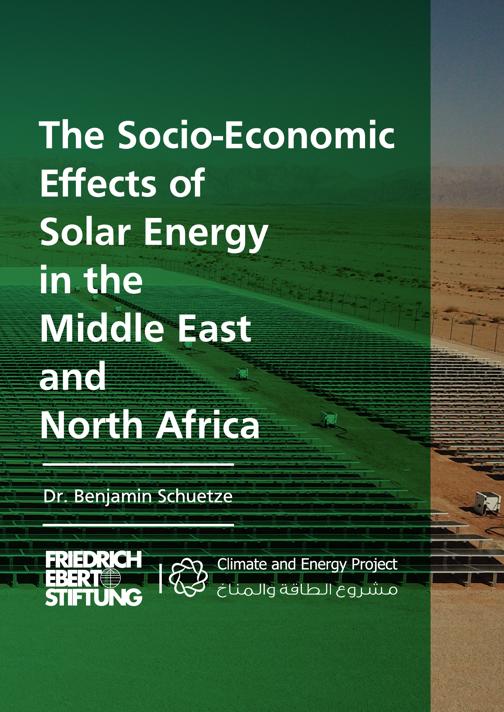Publikationen der StiftungThe socio-economic effects of solar energy in the Middle East and North Africa Titel
Titelaufnahme
- TitelThe socio-economic effects of solar energy in the Middle East and North Africa
- Verfasser
- Körperschaft
- Erschienen
- Parallele Sprachausgabe
- Umfang24 Seiten : Illustrationen, Diagramm
- AnmerkungLiteraturverzeichnis Seite 21-24
- SpracheEnglisch
- DokumenttypDruckschrift
- Schlagwörter (LOCAL)
- Schlagwörter
- Geografika
- ISBN978-9923-759-30-1
- URN
- Das Dokument ist frei verfügbar
- Nachweis
- Archiv
With countries throughout the Middle East and North Africa (MENA) pursuing ambitious targets for a transition to renewable energies, the political economy of a region predominantly analysed through the prism of fossil fuels is on the verge of radical change. While renewable energies continue to account for a relatively low share in the overall energy mix of the region, the inevitability of shifting to renewables seems to have been accepted by the governing elites of the fossil-fuel rich and/or dependent countries of the MENA-region. First and foremost, this report insists on the deeply political nature of any (effort at) energy transition. Attempts at shifting the sources via which a given society generates the energy it needs are bound to (re-)shape power dynamics and are hence necessarily contested. State and non-state actors from within and beyond the region, including investors, business elites, government representatives, political activists and social movements pursue different interests and strategies. It is clear then that no singular logic unfolds itself upon the region, but that instead multiple (attempts at) energy transitions are possible, the precise manifestations and consequences of which may strongly differ depending on socio-economic context and actors involved. Any attempt at discussing socio-economic effects of solar energy in the MENA must build on an awareness of existing power dynamics and of the dynamic nature of governance. In order to do justice to the multiplicity of involved actors and the entangled nature of social, political and economic processes beyond the boundaries of the nation-state, this report draws on the practice turn in international relations theory. While the scope of this report makes it impossible to offer an in-depth analysis of multiple different contexts, the last section will provide select empirical snapshots.
